死亡谷扎布里斯基角上空的银河,美国加利福尼亚州 The Milky Way over Zabriskie Point, Death Valley, California (© Matt Anderson Photography/Getty Images)
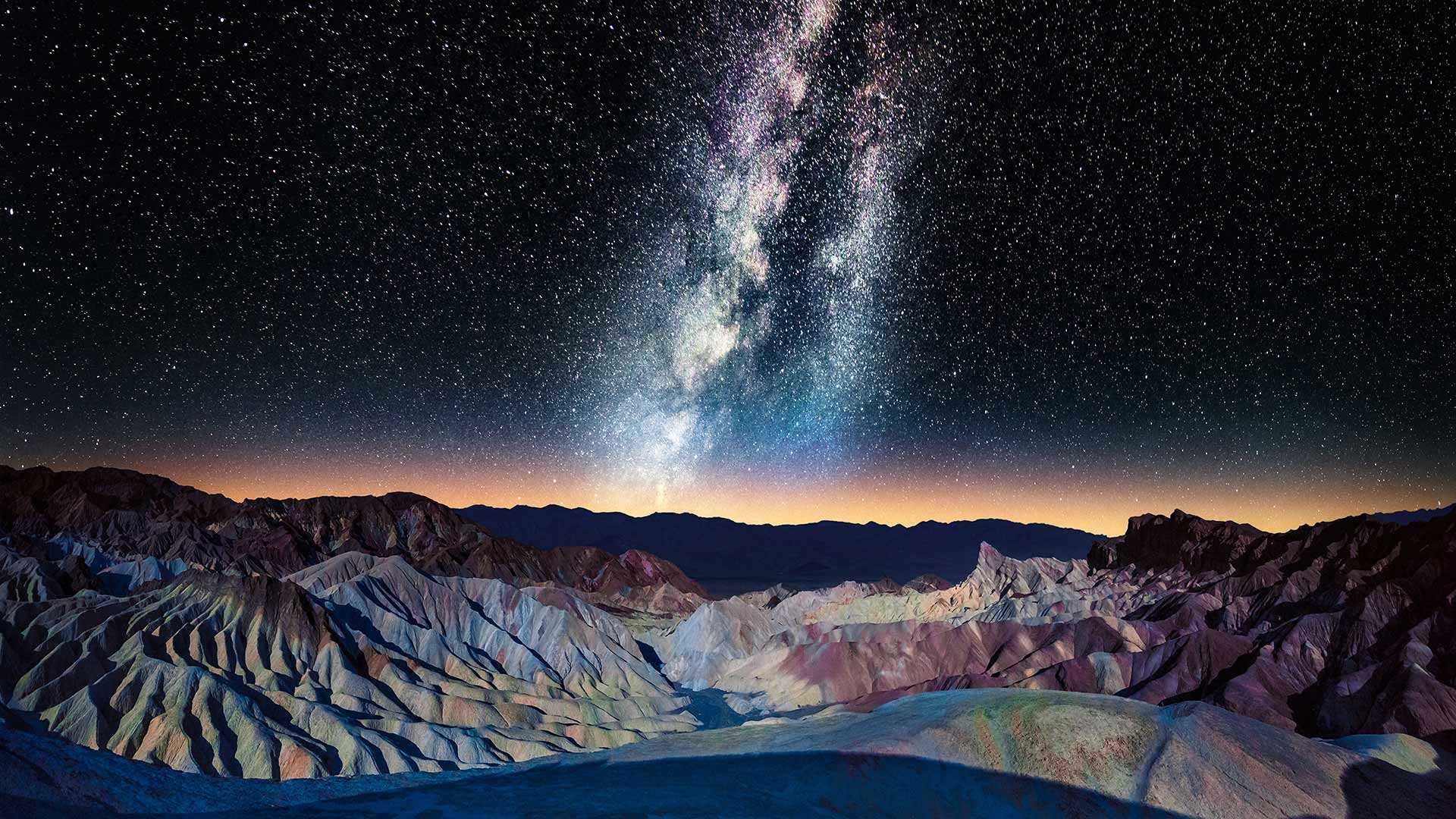
死亡谷扎布里斯基角上空的银河,美国加利福尼亚州 The Milky Way over Zabriskie Point, Death Valley, California (© Matt Anderson Photography/Getty Images)
布满星星的天空 A sky full of stars
扎布里斯基角上空的银河,加利福尼亚州
扎布里斯基角的标志性景观是摄影师和游客一年四季蜂拥而至的原因之一。大自然在这些荒地上侵蚀了亿万年,形成了这片令人惊叹的条纹岩层。这几座山峰上的深色部分是由古代火山爆发的熔岩形成的。扎布里斯基角位于加利福尼亚州的死亡谷国家公园,是无数电影(如《斯巴达克斯》和《星球大战》)的取景地。爱尔兰摇滚乐队U2的音乐专辑《约书亚树》的封面也在这里取景。难怪死亡谷暗夜节在美国如此受欢迎。
Milky Way over Zabriskie Point, California
The iconic view from Zabriskie Point is one of the reasons why photographers and tourists flock to this spot all year round. Weather and water carved out these badlands for eons, resulting in this stunning striped rock formation with an array of colors. The darker material on several peaks was formed by lava of an ancient volcanic eruption, making some of these ridges higher than others. Nestled in Death Valley National Park, California, Zabriskie Point has been the backdrop of countless movies like 'Spartacus' and 'Stars Wars.' The scenic overlook is featured on the cover of Irish rock band U2's album, 'The Joshua Tree.' It's no wonder the Death Valley Dark Skies Festival is a hugely popular event. Zabriskie Point was named after Christian Zabriskie, a distinguished member of the Pacific Coast Borax Company from 1885 to 1933.
下羚羊峡谷,亚利桑那州,美国 Lower Antelope Canyon near Page, Arizona (© AZCat/Getty Images)
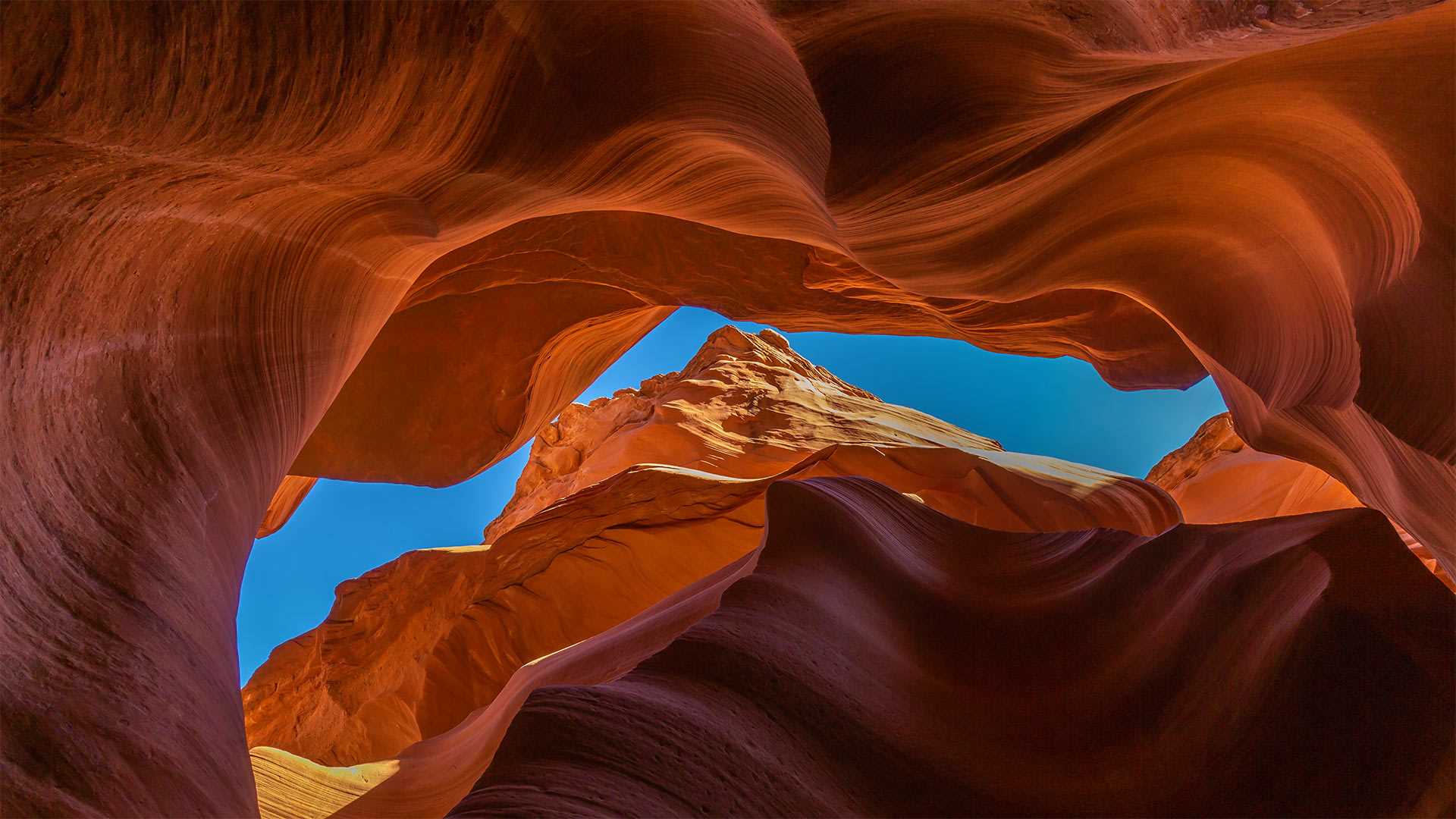
下羚羊峡谷,亚利桑那州,美国 Lower Antelope Canyon near Page, Arizona (© AZCat/Getty Images)
这些美丽的岩石波浪是什么? What are these beautiful sandy waves?
下羚羊峡谷,美国亚利桑那州
下羚羊峡谷是位于美国亚利桑纳州的一个美丽的自然景点。该峡谷也被原住民纳瓦霍人称为“螺旋石拱”。下羚羊峡谷不仅吸引了观景游客、徒步者,其鲜艳的色彩还吸引了许多摄影师。下羚羊峡谷呈“V”字形,这一独特的地貌是水流长年冲刷谷壁而形成的。羚羊峡谷的名字来源于纳瓦霍人的传说故事:过去,羚羊们会在冬天沿着峡谷漫步吃草。
Lower Antelope Canyon, Arizona
Lower Antelope Canyon is a beautiful natural tourist attraction located in Arizona. This canyon is also known as Hazdistazí (spiral rock arches) among the indigenous Navajo people. The canyon is not just a sight to behold and great for a hike, but with its beautiful hues is also a photographer's dream come true. The canyon is shaped like a 'V,' its unique geography created by water that rushed over its walls over many, many years. Antelope Canyon gets its name from Navajo stories regarding antelopes that grazed along the canyon in the wintertime.
帕克城, 美国犹他州 Park City, Utah (© Kruck20/Getty Images)
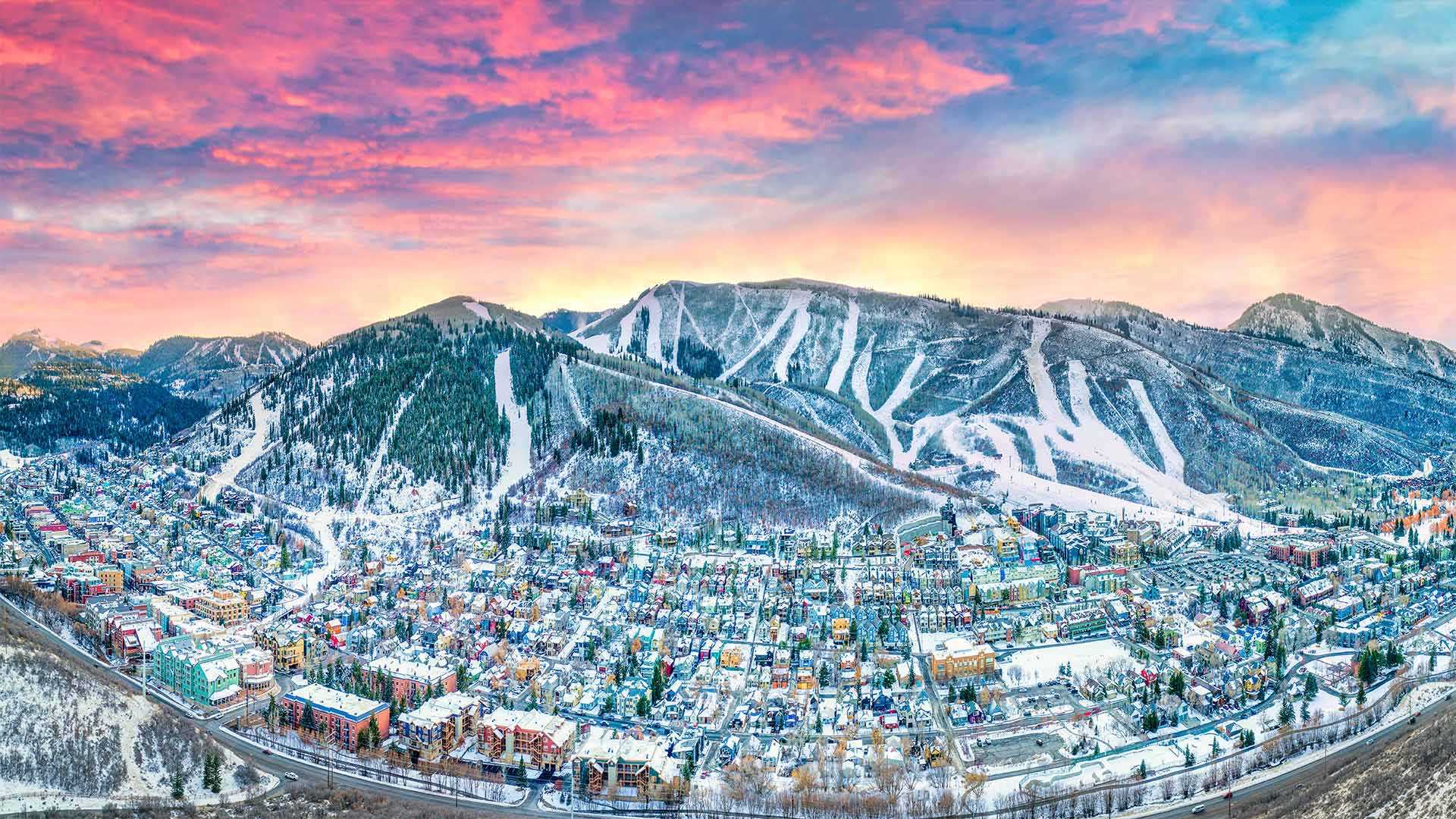
帕克城, 美国犹他州 Park City, Utah (© Kruck20/Getty Images)
圣丹斯上空的云彩 Clouds dance above Sundance
圣丹斯电影节
尽管城外的景色如此美丽,但今天来到帕克城的人,大多是为了在城里举行的圣丹斯电影节,这是美国独立电影人最大的庆典。昆汀·塔伦蒂诺、史蒂文·索德伯格等好莱坞导演的职业生涯都是从这里开始的。每年都有一批年轻电影人怀揣梦想来到这里,希望能卖出自己的作品。
人们普遍误以为该电影节是由罗伯特·雷德福创立的。实际上,圣丹斯电影节的前身是犹他电影节,由斯特林·范·瓦格南于1978年在盐湖城创办,还邀请了雷德福担任该电影节的主席。此后,雷德福便一直参与其中,并将电影节主办地搬到帕克城。圣丹斯电影节也逐渐成为美国最大的独立电影节。过去十年间,圣丹斯电影节还在伦敦、香港等地设置分会场,规模不断壮大。
Sundance Film Festival opens in Park City
As beautiful as this vista is, most of today's visitors to Park City are there to spend the day inside. Sundance Film Festival, the nation's biggest celebration of independent cinema, opens today and runs through January 29. The careers of Hollywood directors such as Quentin Tarantino and Steven Soderbergh were launched here, and every year a new crop of greenhorns arrives in this mountain enclave with the dream that they'll leave with a distribution deal.
It's a common misconception that the festival was founded by Robert Redford. It was actually started as the Utah Film Festival in Salt Lake City in 1978 by Sterling Van Wagenen, who then brought on Redford as chairman. Redford has remained involved with the festival ever since, presiding over its move to Park City and transformation into the largest festival of its kind in the United States. In the past decade, Sundance London and Sundance Hong Kong have expanded the mission of the Sundance Institute.
白沙国家公园,美国新墨西哥州 White Sands National Park, New Mexico (© Andrea Harrell/Tandem Stills + Motion)
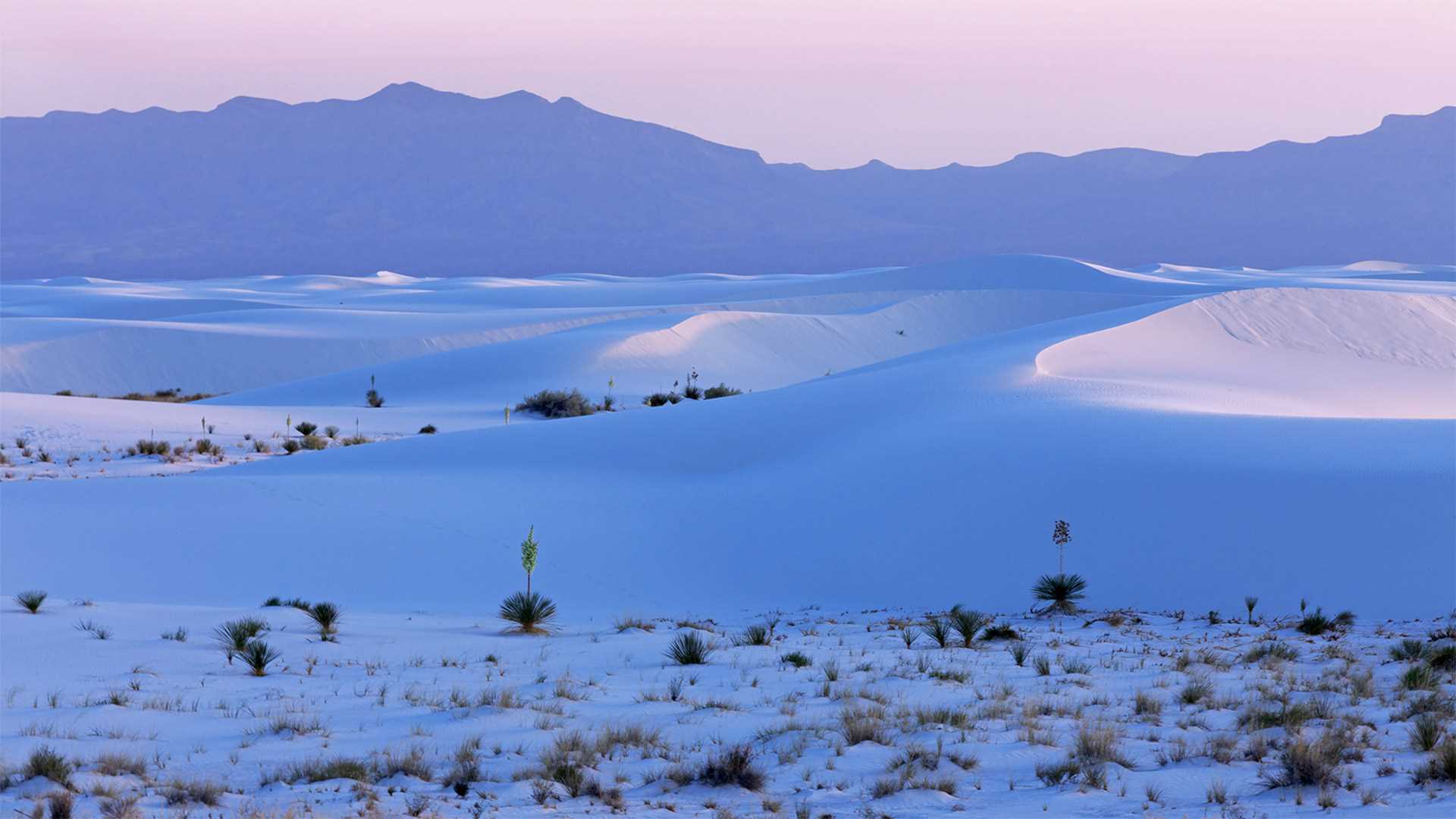
白沙国家公园,美国新墨西哥州 White Sands National Park, New Mexico (© Andrea Harrell/Tandem Stills + Motion)
世界最大的石膏沙漠 The largest gypsum dune field
白沙国家公园,美国新墨西哥州
今天的照片是否让你感觉到一丝寒冷?其实这不是雪,而是地球上最大的石膏沙漠。这是位于新墨西哥州的白沙国家公园,在过去的1.2万年里,周围的山脉产生了约45亿吨雪白的石膏沙。这里最初于1933年1月18日被指定为白沙国家纪念地,然后在2019年正式成为白沙国家公园。如今,这座国家公园里生活着成千上万的物种,其中许多物种已经逐渐进化出了白色,以便更好融入环境。
White Sands National Park turns 90
If today's photo evokes some chilly feelings inside of you, surprise! That's not snow, but part of the largest gypsum dune field on the planet. We're at White Sands National Park in New Mexico, which was first established as a monument on this date in 1933 and then became a national park in 2019. Roughly 4.5 billion tons of gypsum sand has massed in the Tularosa Basin over the past 12,000 years, having worn off the surrounding mountains. Thousands of species live in the park, many of which have evolved to have white coloration, allowing them to blend into the environment.
科罗拉多州布雷肯里奇 Breckenridge, Colorado (© Sean Pavone/Shutterstock)
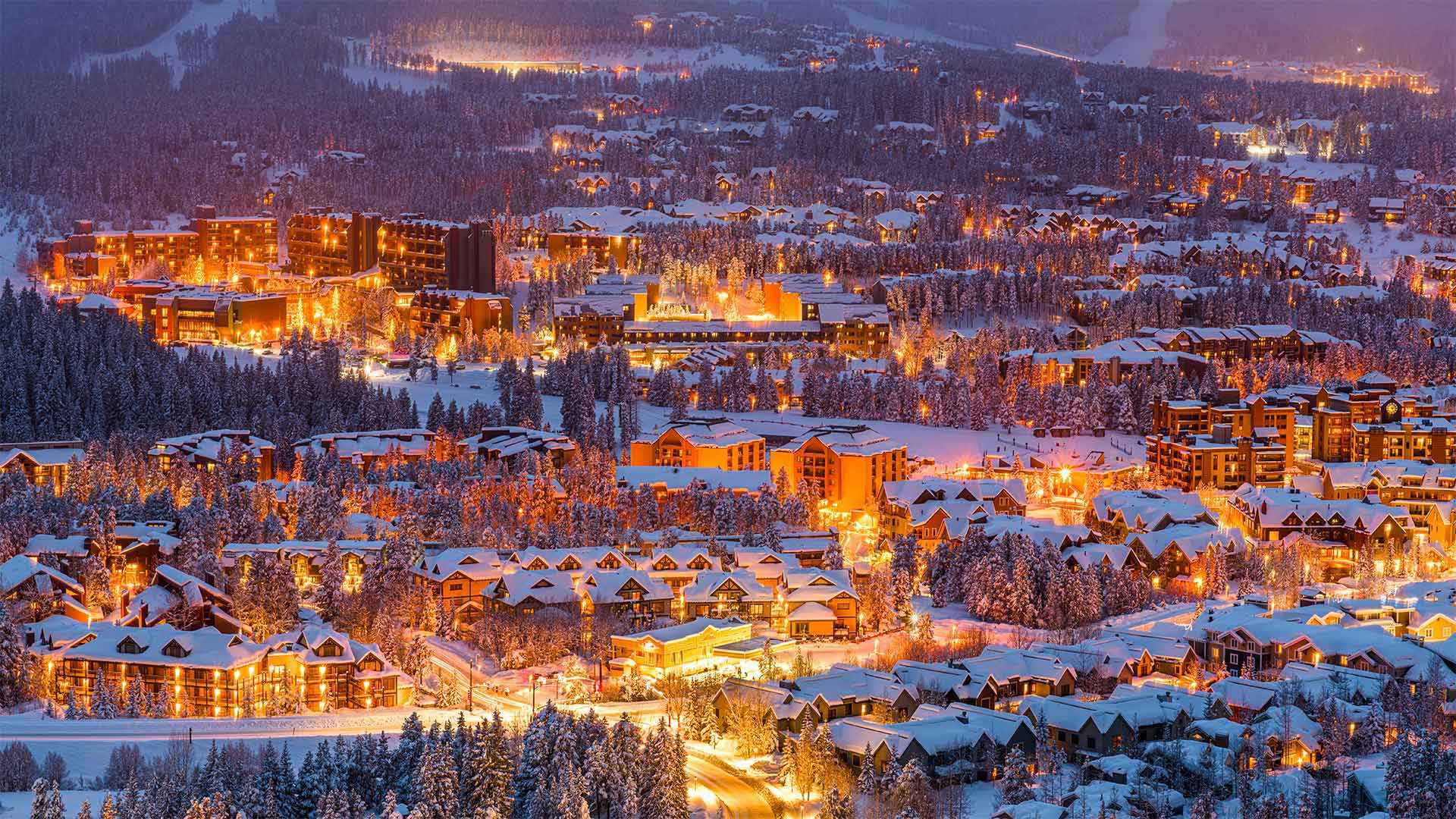
科罗拉多州布雷肯里奇 Breckenridge, Colorado (© Sean Pavone/Shutterstock)
我们去哪里玩? Where we go to play
布雷肯里奇,美国科罗拉多州
19世纪60年代,金矿开采使这座落基山小镇闻名于世。但现在,真正的黄金是飘落在小镇周围山坡上的优质粉雪。布雷肯里奇是科罗拉多州最受欢迎的雪场之一,该度假村总共有35部缆车,连接5座山峰,覆盖2900英亩的区域。游客们也会在夏天来这里钓鱼、骑自行车和划船,游客人数轻松就能超过这里的居民人数(5000人)。如今,布雷肯里奇的金矿早已关闭,自然美景才是这座小镇永恒的价值。
Breckenridge, Colorado
Gold mining put this Rocky Mountain town on the map in the 1860s, but today the real gold is the powdery snow that falls liberally on the slopes that surround the town. Breckenridge is one of Colorado's premier ski and snowboard destinations. The resort has 35 lifts servicing five peaks and 2,900 acres of terrain. The visitors—who also arrive in the summer to fish, cycle, and paddle—easily outnumber the 5,000 residents of this quaint village. The gold mines have long shut down, apart from hosting visits from tourists. The enduring value of Breckenridge is its natural beauty.
阿玛咖港, 阿拉斯加美国 Amalga Harbor, Alaska (© Mark Kelley/Tandem Stills + Motion)
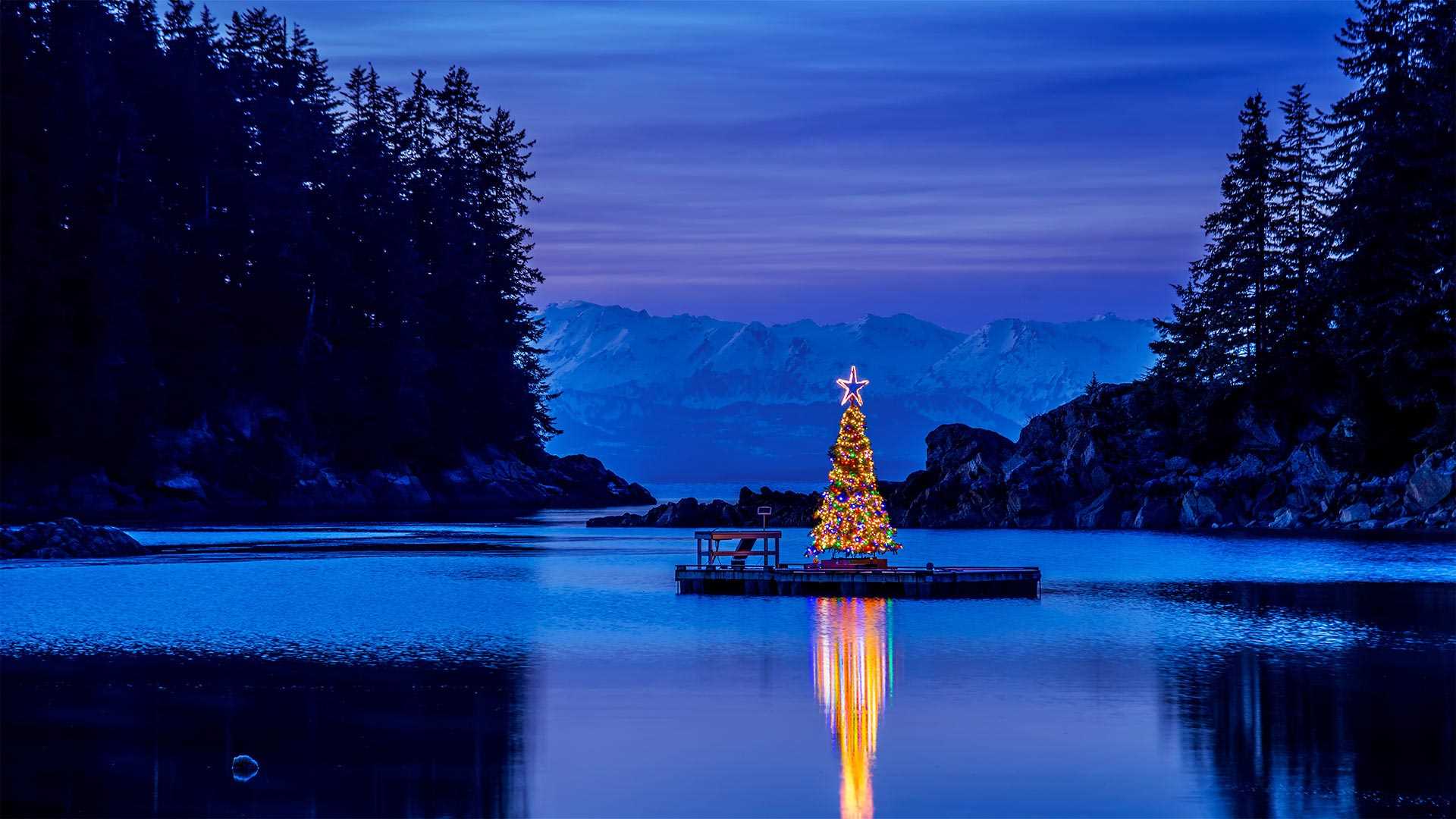
阿玛咖港, 阿拉斯加美国 Amalga Harbor, Alaska (© Mark Kelley/Tandem Stills + Motion)
一切都很平静 All is calm
阿拉斯加阿玛咖港的圣诞节
“最后的边境”上的这个与世隔绝的小海湾是你最不可能看到圣诞树从头到脚装饰着闪闪发光的地方。阿玛咖港位于朱诺(美国为数不多的沿海州首府之一)以北约15英里处,这表明公众表达圣诞快乐的方式很少有局限性,可能包括使用小型驳船。这张照片拍摄于附近的欧内斯特·格鲁宁州历史公园,该公园以阿拉斯加州前州长的名字命名。格鲁宁在1939年至1953年领导该地区,1959年阿拉斯加成为该州的第一批美国参议员之一。在他的政治生涯结束后,他和妻子住在一间小屋里,这间小屋被作为这一历史遗迹的一部分保存下来。
Christmas in Amalga Harbor, Alaska
This isolated cove on 'the Last Frontier' is the least likely place you'd expect to find a Christmas tree decorated from head to toe with lights aglow. Amalga Harbor lies about 15 miles north of Juneau (one of the few coastal state capitals in the US) and shows that the public expression of Christmas cheer knows few limitations–and may include use of a small barge. This photograph was taken from nearby Ernest Gruening State Historical Park, which was named for the former governor of the Alaska Territory. Gruening led the territory from 1939 to 1953 before becoming one of the state's first US senators when Alaska became a state in 1959. After his political career ended, he and his wife lived in a cabin that was preserved as part of this historic site.
迈阿密海滩海洋大道,美国佛罗里达州 Miami, Florida (© Matteo Colombo/Getty Images)

迈阿密海滩海洋大道,美国佛罗里达州 Miami, Florida (© Matteo Colombo/Getty Images)
在艺术天堂追逐夏天 Chasing summer in the art world
迈阿密海滩巴塞尔艺术展
每年12月,艺术世界的中心不是在纽约、东京或伦敦,而是在一个以宽阔的沙滩、古巴咖啡馆和刚果节奏而闻名的小镇。迈阿密巴塞尔艺术博览会(Art Basel Miami Beach)于今天结束了为期三天的展览,是在瑞士巴塞尔(该艺术节于1970年开始)、香港和巴黎举办的国际艺术博览会的美国站。该活动已有20年的历史,是北美最全面的当代艺术博览会,吸引了数千名艺术家、经销商、收藏家、欣赏者,以及寻求乐趣的游客,参加一年一度的创意盛会。
Art Basel Miami Beach
Every December the center of the art world convenes not in New York, Tokyo, or London, but in a town known more for its wide sandy beaches, café Cubano, and conga rhythms. Art Basel Miami Beach, which wraps up its three-day run today, is the American leg of an international art fair also staged in Basel, Switzerland (where the festival started in 1970), Hong Kong, and Paris. The event, now 20 years old, is the most comprehensive contemporary art fair in North America, attracting thousands of artists, dealers, collectors, appreciators, and just fun-seeking tourists for this annual burst of creativity steps from the sand.
特里卡基拉河三角洲,阿拉斯加州克拉克湖国家公园,美国 Tlikakila River Delta in Lake Clark National Park, Alaska (© Dawn Wilson Photography/Getty Images)
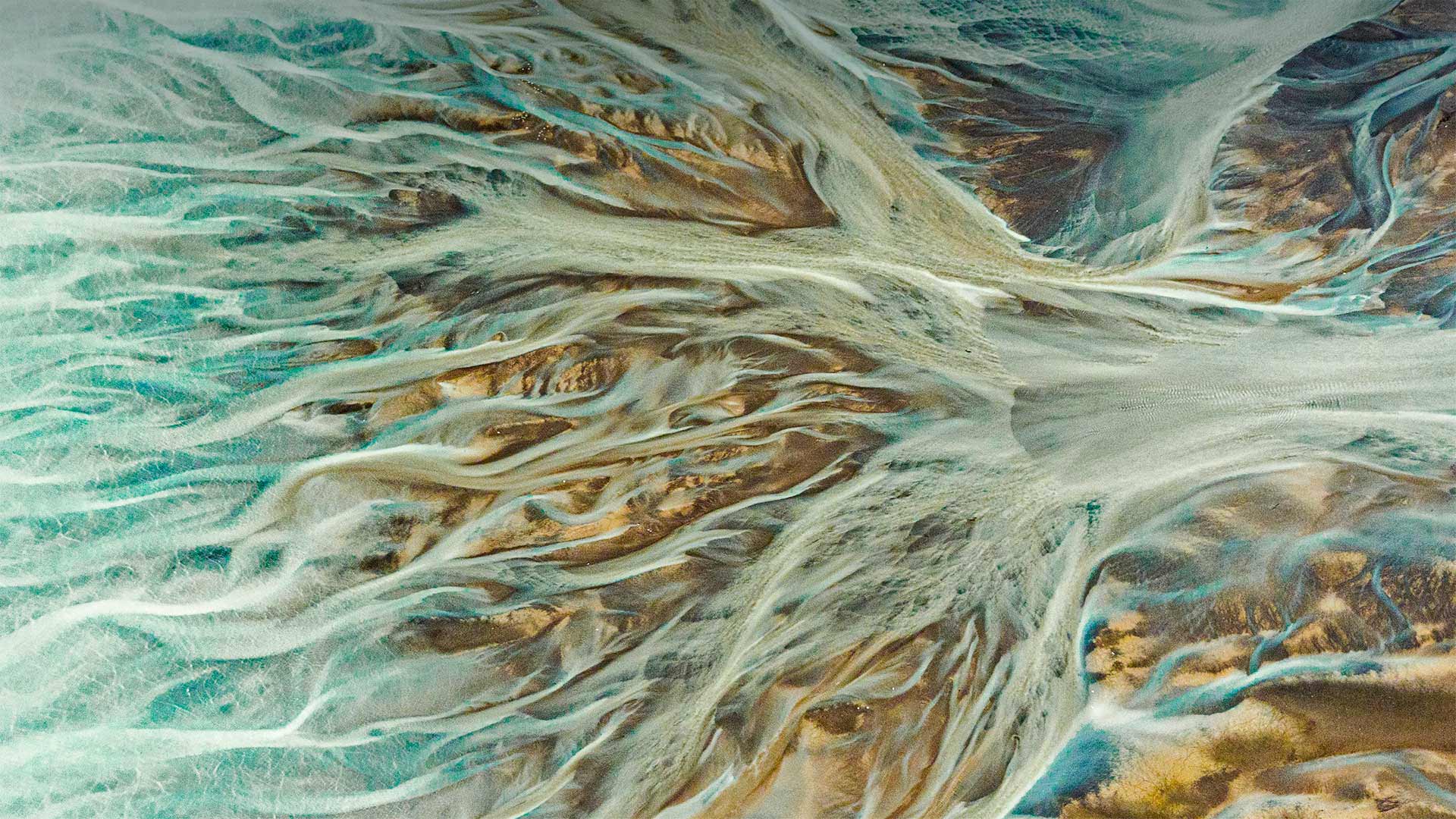
特里卡基拉河三角洲,阿拉斯加州克拉克湖国家公园,美国 Tlikakila River Delta in Lake Clark National Park, Alaska (© Dawn Wilson Photography/Getty Images)
保护阿拉斯加的自然之美 Preserving Alaska's natural beauty
特里卡基拉河三角洲
1980年的这一天,历史上最大规模的保护地扩张使美国国家公园系统的规模扩大了一倍。在那之前,阿拉斯加没有国家公园,但现在该州有八个,加上众多的纪念碑和保护区,保护着超过1.57亿英亩的土地。当卡特总统签署《阿拉斯加国家利益土地保护法案》时,公众有权欣赏像今天照片中这样令人惊叹的地方:克拉克湖国家公园51英里长的特利卡基拉河的辫状河三角洲。
在当地的阿萨巴斯坎语中,Tlikakila字面意思是“鲑鱼在那里。”该公园以盛产鲑鱼的水道而闻名,因此,鱼类对当地经济和生态系统至关重要。当地的熊群从过量的鲑鱼中受益,在克拉克湖看熊很受欢迎。丰富的三文鱼也让公园里的狼群受益匪浅,这是世界上唯一一只只依赖三文鱼的狼群。
Tlikakila River Delta
On this day in 1980, the single largest expansion of protected lands in history doubled the size of the US National Park System. Prior to that day, Alaska had no national parks, but now the state has eight, plus numerous monuments and preserves that protect more than 157 million total acres. When President Carter signed the Alaska National Interest Lands Conservation Act, the public was granted the right to appreciate stunning locations like the one in today's photo: the braided river delta of the 51-mile long Tlikakila River in Lake Clark National Park.
In the native Athabaskan language, Tlikakila literally means 'salmon are there river.' The park is known for its salmon-laden waterways and, as such, the fish is of major importance to the local economy and ecosystem. Local bear populations benefit from the excess salmon, and bear watching is very popular at Lake Clark. The abundance of salmon has also benefited a wolf pack within the park—the only one in the world known to be solely dependent on salmon.
犹他州锡安国家公园的维尔京河,美国 Virgin River in Zion National Park, Utah (© Jonathan Ross/Getty)
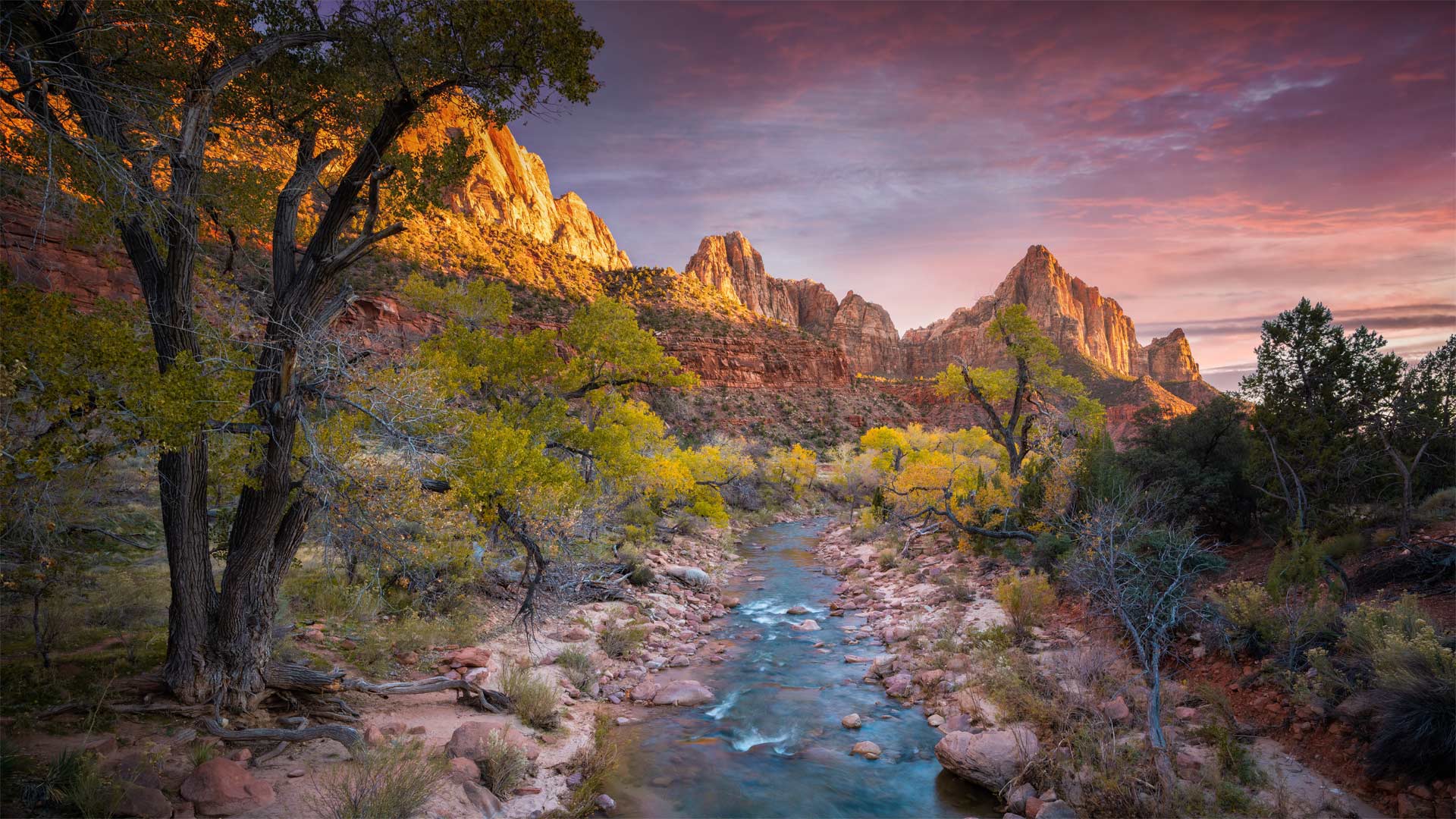
犹他州锡安国家公园的维尔京河,美国 Virgin River in Zion National Park, Utah (© Jonathan Ross/Getty)
锡安国家公园的维珍河
我们的照片将我们带到16英里长的维珍河,在那里它穿过犹他州锡安峡谷上游,形成了一个壮观的千英尺深的峡谷。流经锡安国家公园(今天已满103岁!),由于科罗拉多高原、大盆地和莫哈韦沙漠交汇处的独特生物群落,维珍河是其他地方所没有的独特植物和动物的家园。如果没有维珍河水系的水,像世界上最稀有的物种之一的wondfin小鱼这样的生物就不可能存在。
Virgin River in Zion National Park
Our photo brings us to a 16-mile stretch of the Virgin River where it cuts a spectacular thousand-foot-deep gorge through the upper reaches of Utah's Zion Canyon. Flowing through Zion National Park (which turns 103 today!), the Virgin River is home to unique plants and animals that aren't found anywhere else, due to the unique intersection of biomes found where the Colorado Plateau, Great Basin, and Mojave Desert all meet. Without the water of the Virgin River system, creatures like the woundfin minnow, one of rarest species on the planet, couldn't exist.
威拉米特国家森林麦肯齐河步道上的桥,美国 Bridge on the McKenzie River Trail, Willamette National Forest, Oregon (© Don Paulson/Danita Delimont)
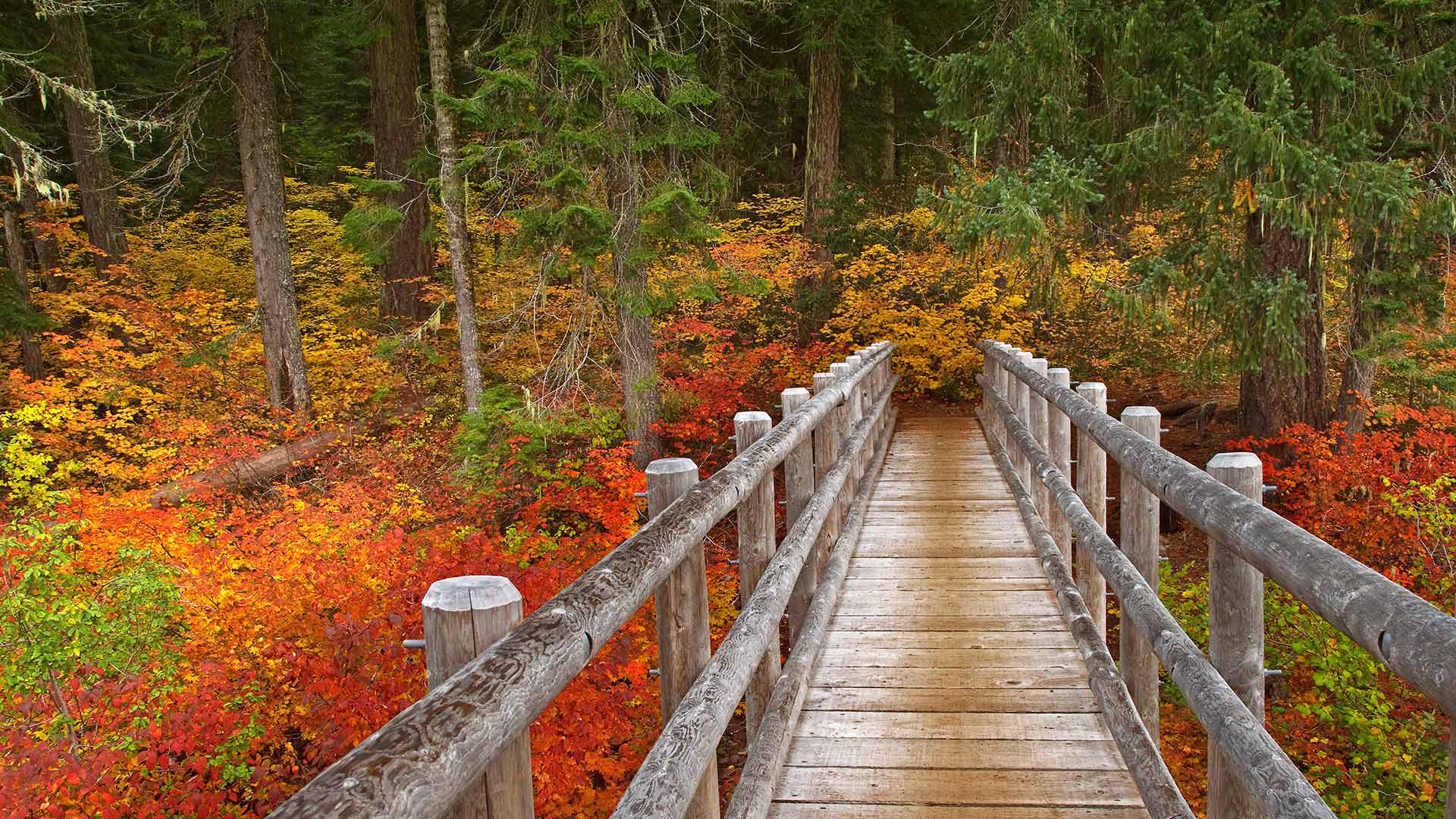
威拉米特国家森林麦肯齐河步道上的桥,美国 Bridge on the McKenzie River Trail, Willamette National Forest, Oregon (© Don Paulson/Danita Delimont)
徒步旅行 Take a hike!
麦肯齐河步道上的桥梁
我们的照片显示俄勒冈州的麦肯齐河国家休闲步道,威拉米特国家森林的一部分。这条小径蜿蜒于湖泊、河流和泉水之间,引导您穿过荫蔽的古老森林。其中一个亮点是可以俯瞰塔莫利奇蓝池(Tamolich Blue Pool),这是一个清澈见底的游泳池,由河水注入其中而成。
Bridge on the McKenzie River Trail
Our photo shows Oregon's McKenzie River National Recreation Trail, part of the Willamette National Forest. This trail winds by lakes, rivers, and springs, guiding you through shady old-growth forests. One highlight: the view overlooking Tamolich Blue Pool, a crystal-clear pool created by the river bubbling up into it.